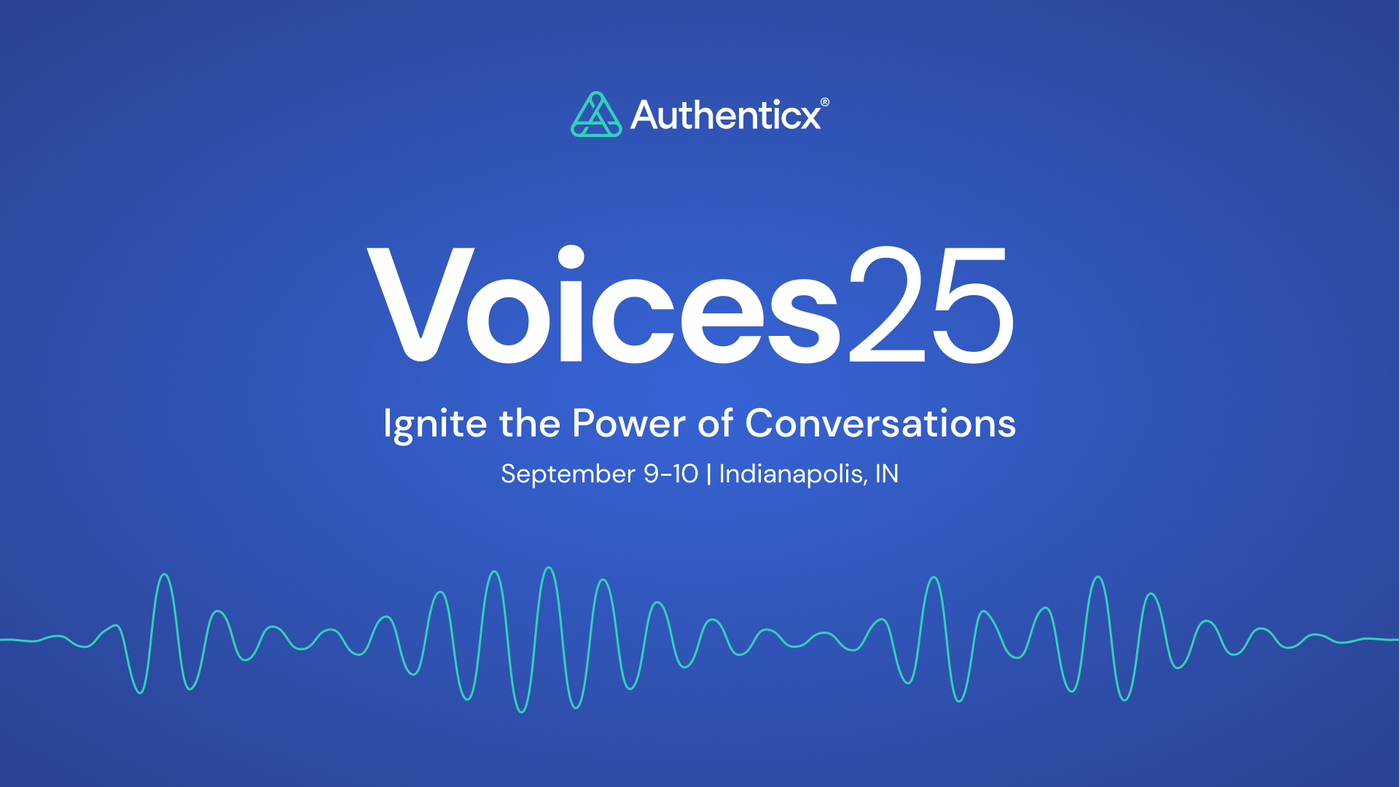
What is impact in healthcare? How do you measure it? While qualitative in nature, impact stems from the intentional actions of leaders to utilize products, forge relationships, and comprehend the needs of their customer population. These actions contribute to organizational success, linking ROI-related metrics to adaptability, growth, and customer-centricity initiatives.
And we know that impact is what healthcare leaders are looking to make. And this is exactly what is being done through the power of conversations. Conversation data can:
- Provide holistic, strategic insights: Conversation data can identify inefficiencies or gaps in your services, product, or support. By analyzing patient conversations and feedback, you can reveal areas for improvement, such as wait times or communication processes. Healthcare organizations can enhance service delivery and improve patient outcomes, both of which lead to effective business operations.
- Enhance operational decision-making: Conversation data can serve as a valuable resource for healthcare leaders when making critical decisions that impact their employees and customers. By analyzing these interactions, you can identify trends, listen for compliance issues, and break down barriers that are affecting your CX and may not be apparent in structured data alone (like surveys or patient health data).
- Improve the customer care journey: Conversation data can locate the obstacles and pain points in your CX. From pinpointing recurring issues to streamlining processes and enhancing training, organizations can achieve higher efficiency and efficacy. Focusing on customer-centered approaches can help meet individual patient needs while enabling continuous monitoring of key retention metrics.
By surfacing critical insights directly from the voice of the customer, your business outcomes can become aligned with your patient outcomes to create a customer-centric impact.
Listening for Impact Takes All of Us
Delivering impact by bringing meaning to conversations is neither a one-person job nor the silver bullet to all of healthcare’s complexities. It takes an honest view of the whole system – payers, providers, and life sciences – to understand what we have built and reconsider how it can be improved.
At a recent conference, Authenticx founder & CEO Amy Brown watched a panel presentation with leaders across healthcare. Each of them shared poignant information and innovations that would excite the most seasoned audience member. However, toward the end, each speaker discussed their issues in progressing their own organization’s customer experiences by directly referencing their frustrations with another healthcare industry segment. Rather than casting blame, it could have been more powerful if they jointly addressed the systemic issues inside healthcare. If they agreed that the administrative burden has increased over these past few years – for employees and customers alike.
“Until we partnered with Authenticx, we could only hear one side of the conversation. Bringing both sides together has been transformational for our nurses and leadership.”
Director, Regional Hospital System
“Morale amongst our team on the phones is a big factor. Authenticx helped us to call out and find nuances and areas where agents excelled.”
Contact Center Leader, Enterprise Payer
“We are practically writing the company strategy based on the data and what we’ve done with it due to our most recent on-site with Authenticx.”
Customer Access Executive, Large Pharma Manufacturer
How to Impact What’s Next
Creating a meaningful impact does start with listening through the power of conversations. However, when an impact is made, the risk in development increases. Will it work? When will it work? What are we sacrificing, if we are? How do we prepare for what we neither know nor have control over?
You have to cut through the noise and act with diligence and intentional strategy. And to strategize for impact effectively, you must know how to maneuver within AI governance and the pace of technological evolution.
Next for AI Impact
The next steps for AI must be planned carefully and with a proactive approach to be flexible and responsive. More people leveraging AI around the world means there will be a greater need to implement best practices, stay proactive, and prepare for AI regulation. Technology’s dynamic shifts mirror the nature of governance being planned. And yet, regulation is not moving at the same pace due to rapidly evolving innovations. The main components to expect regarding the regulatory environment are:
- Supply Chain Resilience – Begin to understand how to mitigate risk and take swift action when it is identified before things potentially worsen.
- Data Positioning – Employ high standards of data security to protect business and customer data, having oversight of your organization’s alignment.
- AI in Society – Since AI is everywhere, you must learn when and how to use it strategically and implement a human-in-the-loop approach.
- Digital Immersion – Prepare ahead of time to act responsibly to regulatory enforcement and movement within your industry.
Next for AI Builders
The next steps for building AI and innovative technology are outlined by the oft-regarded “Takers, Shapers, and Makers” system. These share how both industries and leaders can create the best and most realistic options for them:
- Takers: This approach uses existing AI solutions, relying on turn-key products.
- Shapers: This approach uses existing tools to leverage your data, relying on vendor services to create customizations and dashboards alongside you.
- Makers: This approach uses your internal team of developers and resources to build the models, creating your own tags, classifiers, and systems.
Next Actions to Make an Impact
“But what can I do now?”
We hear you. Where to start?! Here is our simple guide to start now:
- Ask the hard questions about your team, your goals, and most importantly, your customers.
- Review your current vendors and identify where gaps are located to best strategize on how to fill them.
- Take a grasp of your unstructured data and activate it by listening at scale to surface barriers, friction, and successes.
- Plan the plan and roll it out by sharing current-state goals, 3-month goals, 6-month goals, 1-year goals, and 2-year goals. This needs to take into account AI market research and shifting regulations.
- Stay updated to be best prepared for new innovations, tools, and even a new customer base. Without learning what others are doing, you will not be able to practice a proactive approach.
With the alignment of understanding your nuanced needs, what is available, and where the market is heading, creating a system fosters adaptability, growth, and customer-centricity — making the impact all healthcare leaders are looking to create.
Catch up with this blog series:
- Blog #1: Reshaping Patient Stories in Healthcare
- Blog #2: Reshaping Healthcare Data with Insights
- Blog #3: Reshaping Insights with Healthcare AI Solutions

About Authenticx
Authenticx was founded to analyze and activate customer interaction data at scale. Why? We wanted to reveal transformational opportunities in healthcare. We are on a mission to help humans understand humans. With a combined 100+ years of leadership experience in pharma, payer, and healthcare organizations, we know first-hand the challenges and opportunities that our clients face because we’ve been in your shoes. In 2023, Authenticx was ranked No. 349 on the Inc. 5000 recognized as one of America and Indiana’s fastest-growing private companies.
Want to learn more? Contact us!
Or connect with us on social! LinkedIn | Facebook | Instagram | YouTube


